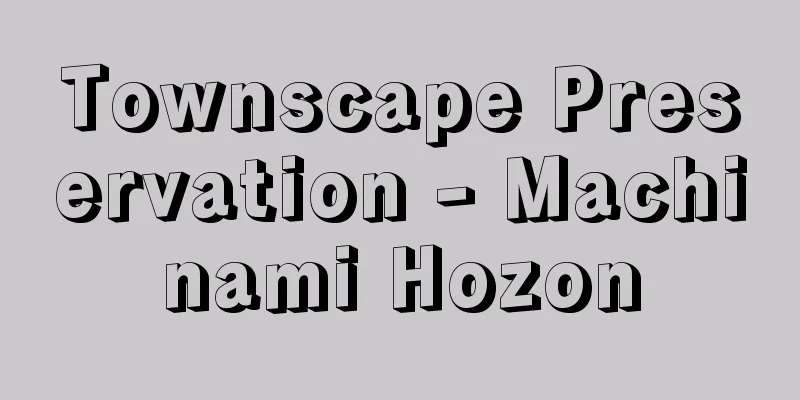Oświęcim - Oświęcim (English spelling)

|
A city in the Małopolskie Voivodeship in southern Poland. Known for the Jewish concentration camps that were located on the outskirts during World War II. German name: Auschwitz. Located 50 km west of the voyage capital Krakow, with a population of 43,586 (2000), the town's origins are unclear, but it has a history dating back to the Middle Ages. A railway hub, it is a small industrial town with chemical, leather, and agricultural tool manufacturing. During World War II, the Nazis murdered 1.1 to 1.5 million people (the majority of whom were Jews) in the concentration camps here from 1940 to 1945 (experts estimate the number of victims). For this reason, the name Auschwitz became a symbol of the Nazi genocide of the Jews (the Holocaust). Since the 13th century, it has developed as a city, and in 1772, it was attached to Austria in the First Partition of Poland. In the late 19th century, it became an industrial city, and in 1919, it was returned to Poland when Poland regained its independence. When World War II began, it was occupied by German troops in 1939. In 1940, the Nazi SS established a concentration camp here, but the following year, when Hitler ordered the "Final Solution" of the Jewish problem, it was expanded as a mass murder facility. The primary reason for choosing this location was that it was located almost in the center of the German-occupied area of Europe and was a hub of the railway network. From then until it was liberated by the Soviet army in January 1945, many people were killed there, including Jews brought from all over Europe, Poles, Russians, Roma (formerly known as Gypsies), and political prisoners. The people who were interned there were collected from all over the country according to a meticulous transportation plan, and the able-bodied were selected for forced labor camps and the others for extermination camps, where they were killed in gas chambers and incinerated. Their clothing was distributed to foreign forced laborers in munitions factories, and their gold, silver, and jewelry were sent to the Reichsbank (German national bank). The fact that such planned massacres were carried out shows the true nature of Nazism and the extreme madness brought about by war. The remains of the camp were registered as a World Heritage Site in 1979, and are preserved as the National Auschwitz-Birkenau Museum. [Teruo Yoshida] "Auschwitz: The Confessions of Commandant Rudolf Hess" by R. Hess, translated by Keiji Kataoka (1972, Simul Publishing) "Auschwitz Is Not Over" by Primo Levi, translated by Hirohide Takeyama (1980, Asahi Shimbun) [References] |A concentration camp built by Nazi Germany during World War II. It is now a museum, and the starvation chambers and gas chambers remain. World Heritage Site "Auschwitz-Birkenau: Nazi Germany's Concentration and Extermination Camp (1940-1945)" (Poland, registered in 1979) Poland Oświęcim ©Shogakukan "> Auschwitz Concentration Camp Source: Shogakukan Encyclopedia Nipponica About Encyclopedia Nipponica Information | Legend |
|
ポーランド南部、マウォポルスカ県の都市。第二次世界大戦中、郊外にユダヤ人強制収容所があったことで知られる。ドイツ語名アウシュヴィッツ。県都クラクフの西50キロメートルにあり、人口4万3586(2000)。町の起源はさだかではないが中世からの歴史をもつ。鉄道の結節点で、化学、皮革、農具製造などが行われる小工業都市。第二次世界大戦時の1940~45年、ナチスはここの強制収容所で110~150万人(その大多数がユダヤ人)を殺害した(犠牲者数は専門家による推計)。このためアウシュヴィッツの名はナチスのユダヤ人大量虐殺(ホロコースト)を象徴することばとなった。 13世紀以来、都市として発展し、1772年ポーランド第一次分割でオーストリアに帰属し、19世紀後半に工業都市となり、1919年ポーランドの独立回復に伴ってポーランドに復帰した。第二次世界大戦が始まると、1939年ドイツ軍に占領された。40年ナチスの親衛隊(SS)はここに強制収容所を設けるが、翌41年ヒトラーがユダヤ人問題の「最終的解決」を命じると、これを受けて大量殺害施設として拡大された。この場所が選ばれた第一の理由は、ヨーロッパのドイツ占領地域のほぼ中央に位置し、鉄道網の結節点であったことにある。以後45年1月ソ連軍に解放されるまで、全ヨーロッパからつれてこられたユダヤ人をはじめ、ポーランド人、ロシア人、ロマ(かつてはジプシーとよばれた)、政治犯など多数の人々が殺害された。収容された人々は綿密な輸送計画に従って各地から集められ、強壮なものは強制労働収容所へ、その他は絶滅収容所へと選別され、ガス室で殺害、焼却された。彼らの衣料は軍需工場の外国人強制労働者に配布され、金銀宝石類はライヒスバンク(ドイツ国立銀行)に送られた。このような計画的虐殺が行われたことにナチズムの本質、戦争のもたらす狂気の極限をみることもできよう。収容所跡は1979年に世界遺産の文化遺産(世界文化遺産)として登録され、国立のアウシュヴィッツ‐ビルケナウ博物館として保存されている。 [吉田輝夫] 『R・ヘス著、片岡啓治訳『アウシュヴィッツ収容所――所長ルドルフ・ヘスの告白遺録』(1972・サイマル出版会)』▽『プリーモ・レーヴィ著、竹山博英訳『アウシュヴィッツは終わらない』(1980・朝日新聞社)』 [参照項目] |第二次世界大戦時にナチス・ドイツによってつくられた収容所。現在は博物館となっており、餓死室、ガス室などが残されている。世界文化遺産「アウシュヴィッツ‐ビルケナウ:ナチス・ドイツの強制絶滅収容所(1940―1945)」(ポーランド・1979年登録) ポーランド オシフィエンチム©Shogakukan"> アウシュヴィッツ強制収容所 出典 小学館 日本大百科全書(ニッポニカ)日本大百科全書(ニッポニカ)について 情報 | 凡例 |
<<: Push boat (ship) - Push boat
>>: Oshihara Township - Oshiharago
Recommend
Muhammad Dawud (English spelling)
…His father, King Nadir Shah's brother, Muḥam...
Eel - Eel
⇒ Aile Source: About Shogakukan Digital Daijisen I...
Kagehisa Ito
…The founder of Itto-ryu swordsmanship. His name ...
cuckoo-shrike (English spelling) cuckooshrike
…It includes about 70 species in 9 genera, and va...
Ilya, A.
… [Military rule to civilian rule] However, the i...
differential aeration cell
…Typical examples are dezincification corrosion o...
Parini - Giuseppe Parini
Italian poet. Born near Como. Due to his poverty,...
Collinear chart - Collinear chart
Please see the Nomograph page. Source: Encyclopae...
bunya-bunya (English spelling) bunyabunya
…Both species have a dense texture and are used f...
Tithe - English spelling: tithe
Taxation of a certain amount of income was widely...
Aylesbury
...Famous meat breeds include the Pekin (original...
Touin [town] - Touin
A town in Inabe County in northern Mie Prefecture....
International Women's Year
It is one of the plans of action declared and esta...
Brown Hawk Owl (Green Leaf Wood Rabbit) - Brown Hawk Owl (English spelling)
A bird of the order Strigiformes and family Strigi...
Piazzetta (English spelling) Giovanni Battista Piazzetta
Italian Venetian painter. Born in Venice on Febru...









